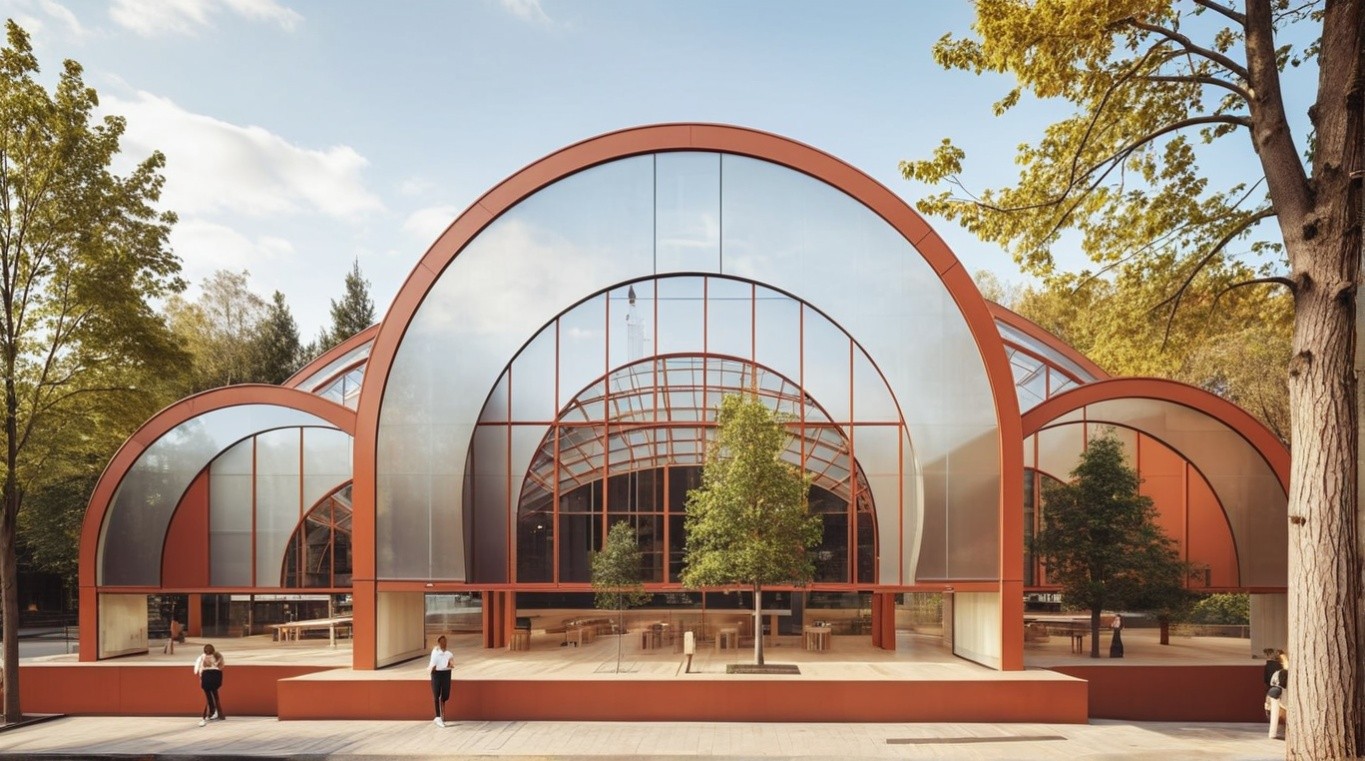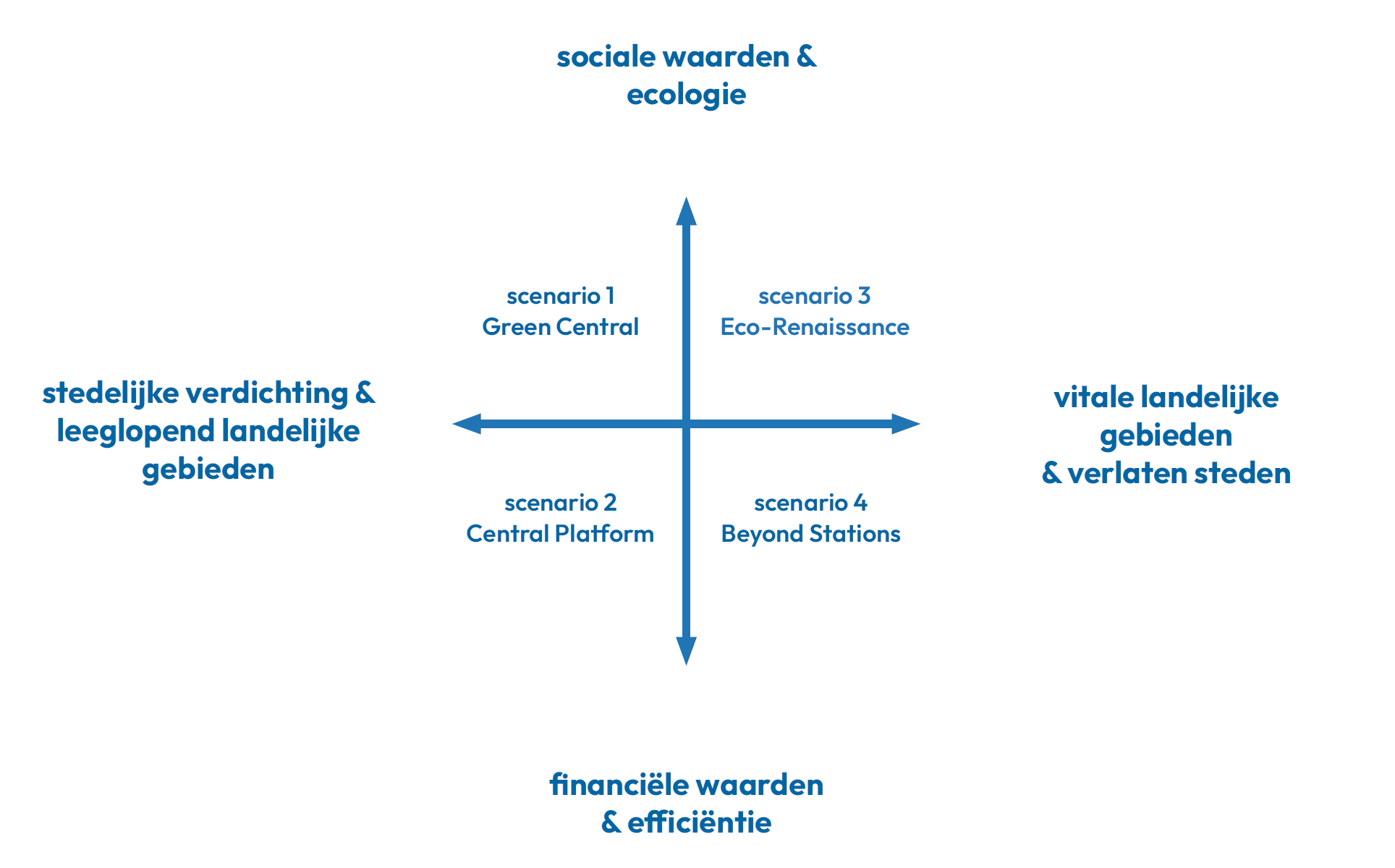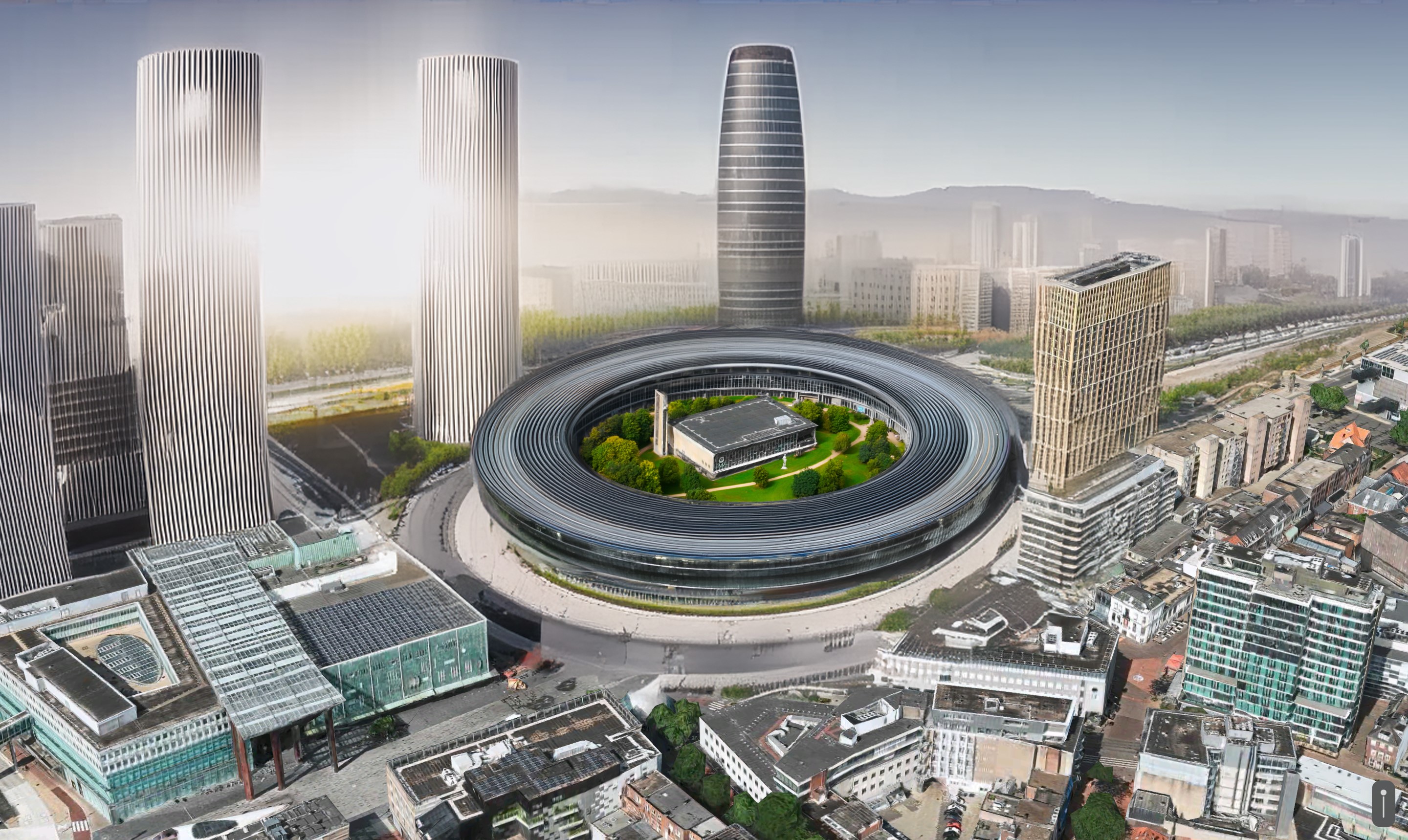

Nowadays, stations are primarily designed for efficiency and consumption, functioning as practical transit hubs. But they can be much more: vibrant, social intersections where employment, economic, social, and environmental interests converge. How can they be designed in such a way?

Decision-makers and railway engineers are often constrained by economic and technical limitations, which can overshadow the station’s potential as a place for community and connection. Soft, qualitative aspects such as social engagement and environmental integration are difficult to prioritize. To imagine a new type of station, we must start with different principles—principles that value the social role of the station and its place within the broader region.

This is no easy task. To assist decision-makers in making strategic choices, Studio Kornelia Dimitrova and Massif Architects, together with experts from Sweco, developed four future scenarios. Each scenario presents a unique vision of how stations could evolve. What if Eindhoven, for example, became the Silicon Valley of the Netherlands? To illustrate their potential, the scenarios are accompanied by four speculative station impressions in the Publication.

The future scenarios were developed using the ‘Future Scenario Method.’ Based on trends that could significantly shape society in the future—and, by extension, the role of train stations—four distinct future scenarios were created to reflect different values.
The photo exhibition at Dutch Design Week (DDW) invites visitors to explore new ideas for how stations can be used, serving as a starting point for forward-thinking design. Photos by ©Bram Petraeus